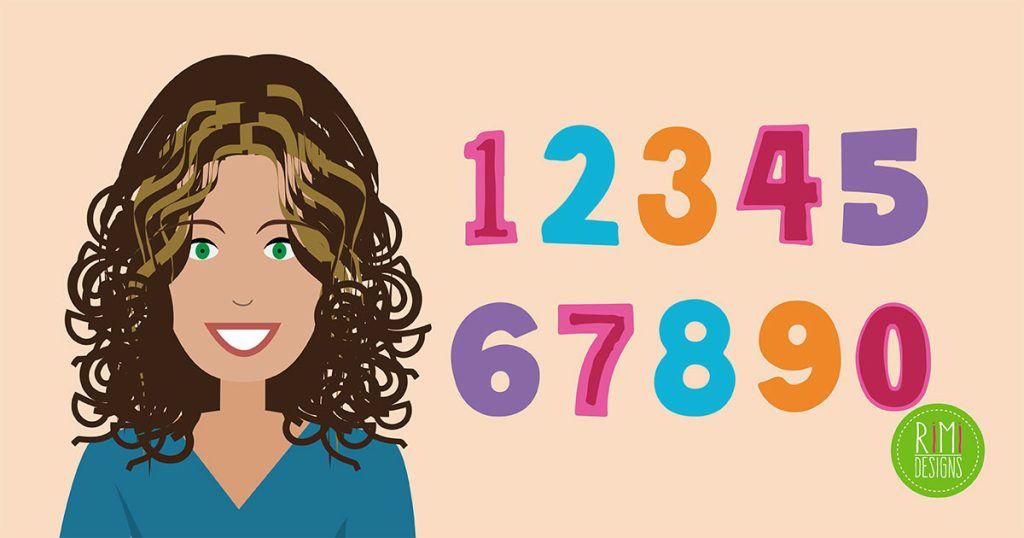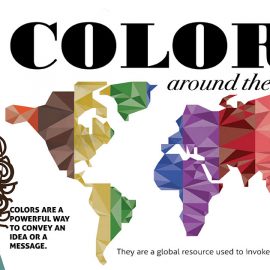
7 Ways to Use the Power of Numbers in Your Designs
Do you have a favourite number? Maybe one that you feel is lucky? If you do, you’re not alone.
What is it about numbers that triggers these feelings? Well, as long as humans have used numbers, they’ve held deep meaning that goes beyond just the mathematical symbol.
As history goes, number-letter combinations have held religious, superstitious, mythical and, of course, mathematical significance. Some would argue that numbers are the most universal form of language.
So what does this mean for graphic design? Numbers are loaded with hidden meaning, whether we intend them to be or not, and we can capitalise on those qualities to make our designs and branding more effective.
Let’s take a look at 10 different types of numbers and how they can lend extra meaning to your design projects.
1. Odd and even numbers
Use odd numbers to emphasise masculine qualities and even numbers to emphasise feminine qualities
For as long as numbers have been around, they’ve been associated with other, more relatable concepts.
The ancient Sumerians, one of the first people groups to create an abstract numerical system, used words for the numbers one and two that were the same as words used to describe men and women, respectively. In fact, the Sumerians may mark the start of when odd numbers (like 1, 3 and 5) began to be associated with stereotypically masculine qualities and even numbers (like 2, 4 and 6) with stereotypically feminine qualities.
Studies have proven that this connotation persists even in our modern, enlightened society. Experiments reveal that people perceive numbers as “gendered” — specifically odd numbers as masculine and even numbers as feminine.
Thus, applying this concept in a design context, you can use the perceived gendered qualities of odd and even numbers to enhance the visual themes of your design.
2. Seven
The world’s favourite number? The cultural and religious significance of 7 and what it means for your design
Across cultures, ages and genders, the number 7 was the clear favourite. It’s no wonder, seven is a recurring and significant number in many religions, mythical traditions and even in everything from nature to pop culture.
Seven is also mathematically unique. It’s the only digit of the first 10 numbers that can’t be multiplied or divided within the group.
So, in case you haven’t picked up on it yet, seven is a pretty unique and special number to almost everyone. It’s ingrained in our consciousness.
So, including the number 7 in a design may give your project an extra sheen of significance and substance. The tactic may be especially appropriate for designs with a high-end aesthetic.
3. Ten
Use 10 to communicate security, practicality or certainty
Ten is a fairly emotionless number. It’s very hard to engage people emotionally with 10, as this number feels ordered and highly rational.
But that’s not necessarily a bad thing. Because it has practical, solutions-oriented connotations, the number 10 can be effective in designs that need to communicate those qualities. Perhaps imagery that accompanies instructional content or branding for products that offer a solution to a problem.
4. Eleven
Use 11 to surround your design with mystery or an element of secrecy
The number 11 denotes secrecy and has enormous mystical potential, simply because it’s not 10 or 12 or 5.
It’s not a sensible number. Eleven goes beyond the human finger count, beyond the practical familiarity of 10 — and therefore beyond the ordinary.
5. +1
Go one beyond a whole number to raise brand expectations
Going one beyond a whole number raises the expectation but doesn’t overplay it, elevating a brand beyond the ordinary into something that’s not quite definable, that’s unique.
Rather than stopping at 100 or 500, 101 and 501, feel exceptional — one better, literally and figuratively.
6. Familiar numbers
Use even, easily divisible numbers to communicate trustworthiness
Familiar numbers that are easier to process and easily divisible — usually even numbers — are more attractive to consumers.
People are more likely to buy an imaginary brand of dandruff shampoo called Zinc 24 than one called Zinc 31, and are even willing to pay 10% more for it! We are always sensitive to whether a number is divisible or not, and this sensitivity influences our behaviour.
So, if you have a design or product that needs to reflect qualities like trust and familiarity, try integrating an even, easily divisible number like 18, 24 or 36.
7. Likable numbers
Use numbers under 20 to appeal to the largest audience
People rate every number from 1 to 100 as liked, neutral or disliked. The types of numbers people tend to favour fall between 1 and 20, with a particular liking for numbers 1 through 10.
So, if you want to tap into people’s feelings toward certain numbers in your design, using numbers on the lower range of the 1 to 20 range should be a safe bet.
SOURCE: Canva



